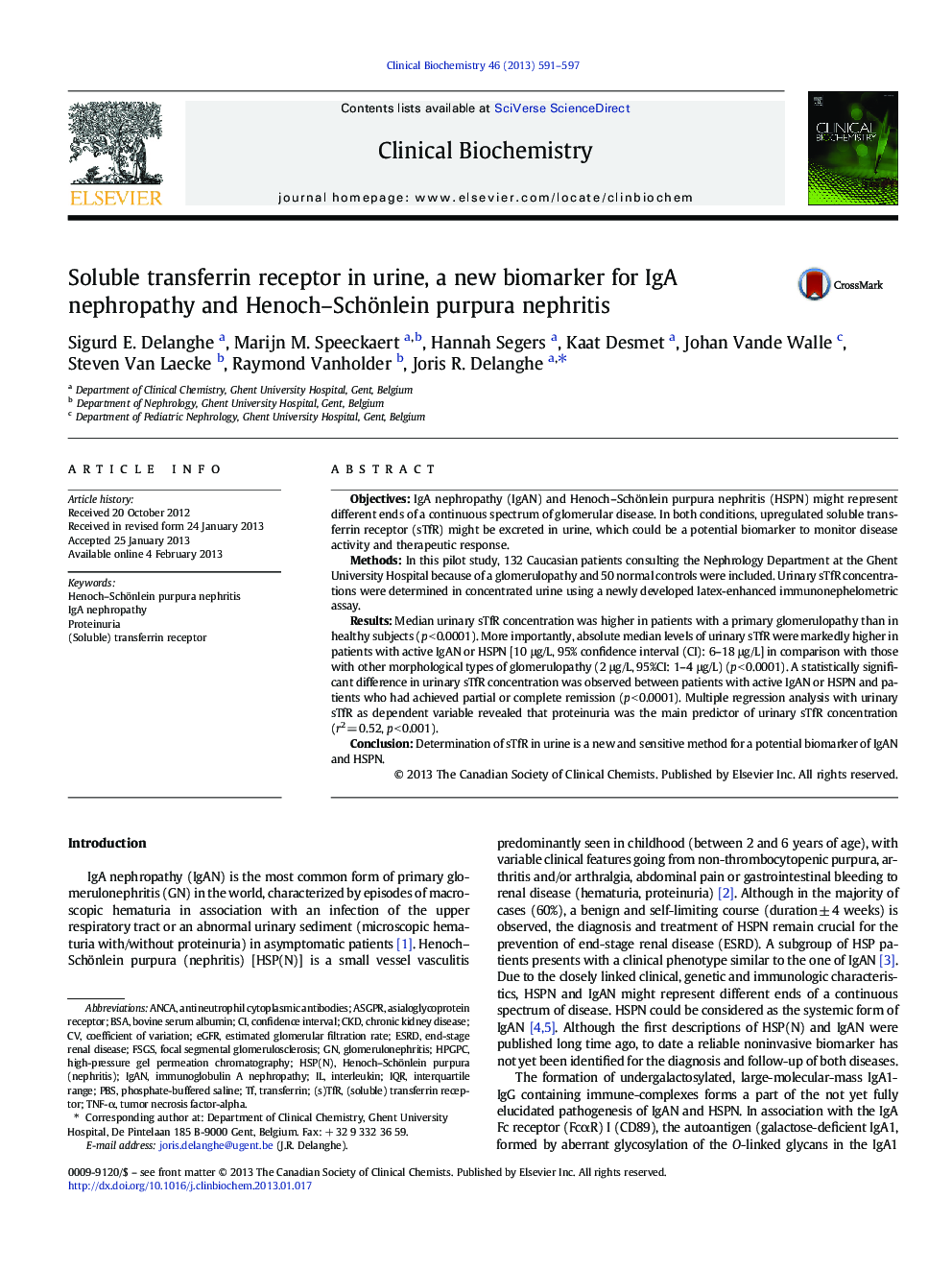| Article ID | Journal | Published Year | Pages | File Type |
|---|---|---|---|---|
| 1969639 | Clinical Biochemistry | 2013 | 7 Pages |
ObjectivesIgA nephropathy (IgAN) and Henoch–Schönlein purpura nephritis (HSPN) might represent different ends of a continuous spectrum of glomerular disease. In both conditions, upregulated soluble transferrin receptor (sTfR) might be excreted in urine, which could be a potential biomarker to monitor disease activity and therapeutic response.MethodsIn this pilot study, 132 Caucasian patients consulting the Nephrology Department at the Ghent University Hospital because of a glomerulopathy and 50 normal controls were included. Urinary sTfR concentrations were determined in concentrated urine using a newly developed latex-enhanced immunonephelometric assay.ResultsMedian urinary sTfR concentration was higher in patients with a primary glomerulopathy than in healthy subjects (p < 0.0001). More importantly, absolute median levels of urinary sTfR were markedly higher in patients with active IgAN or HSPN [10 μg/L, 95% confidence interval (CI): 6–18 μg/L] in comparison with those with other morphological types of glomerulopathy (2 μg/L, 95%CI: 1–4 μg/L) (p < 0.0001). A statistically significant difference in urinary sTfR concentration was observed between patients with active IgAN or HSPN and patients who had achieved partial or complete remission (p < 0.0001). Multiple regression analysis with urinary sTfR as dependent variable revealed that proteinuria was the main predictor of urinary sTfR concentration (r2 = 0.52, p < 0.001).ConclusionDetermination of sTfR in urine is a new and sensitive method for a potential biomarker of IgAN and HSPN.
► In IgAN and HSPN, upregulated soluble transferrin receptor is excreted in urine. ► Urinary sTfR concentrations were determined using an immunonephelometric assay. ► Urinary sTfR concentration was higher in primary glomerulopathy than in controls. ► Determination of sTfR in urine is a new potential marker of IgAN and HSPN.
